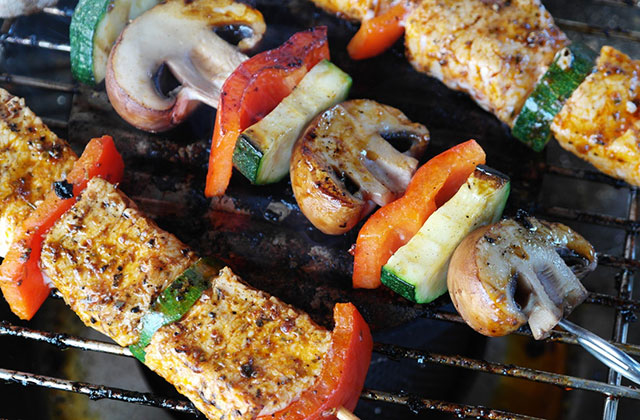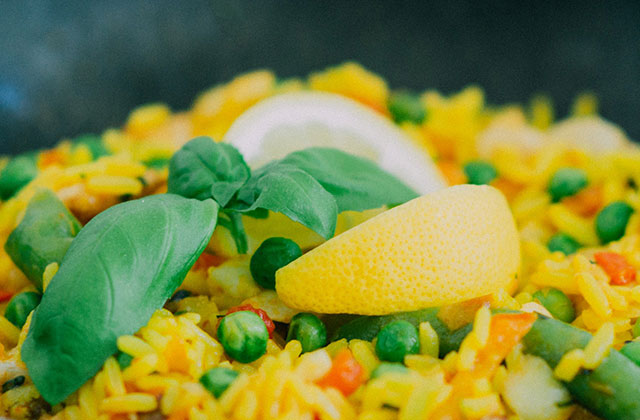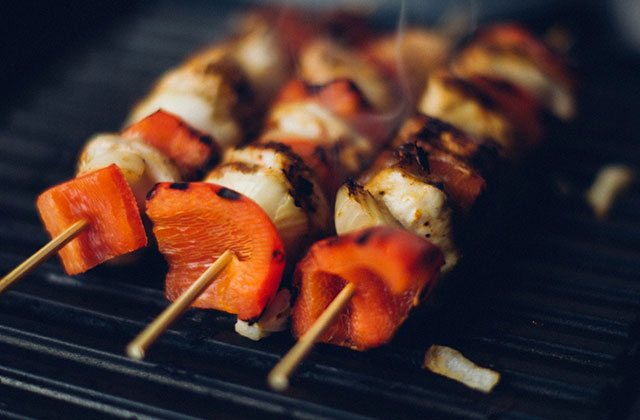Imagine an expensive five star restaurant with shining cutlery, beautiful plating, complex gourmet food and contrast this with an old wooden table with simple food made from local ingredients in the middle of a vineyard, garden or home. Which setting would you prefer? Fancy gourmet food made from imported exotic ingredients and expensive foreign wine may be the perfect match but it may not encourage a wine culture as it cannot be afforded by the majority.
“Go local”, be a “locavore”
Why not pair easily available indigenous food with reasonably priced native wines and save the expensive wines for special occasions? After all, “Go local”, “locavore” are truly the buzz words now and consumers are sourcing everything that is produced close to their homes or cities. It is a concept that existed in the past when all the produce of a place or region got used up in the same area. We need to move to this idea and pair our Indian home food like kadhi chawal, dal makhani, poriyal, thalipeeth, biryanis, momos or chicken stew with locally made wines from Chenin Blanc, Riesling, Shiraz or Cabernet Sauvignon. This is good for the environment as it will save a lot of carbon besides providing an inexpensive way to have wine on the dinner table
Wine has been an inseparable part of food in Europe for a very long time. In medieval times, the water quality was suspect and fraught with water borne germs and wine was the safest beverage to drink. The abundant cultivation of grapes ensured that wines were available for everyone. Food pairing was easy as the local produce of vegetables and meat was paired with wine and this became a part of the wine culture. White wine with white meat and red wine with red meat has been the oft repeated clichéd combination.

Indian food options
In India meat consumption is limited but there is a vast array and variety of vegetables and preparations. Indian food available in most Indian restaurants is predominantly oily, greasy and spicy hot while home food is much milder and easier to pair with wine. Look for common traits like acid and sweetness first, followed by density and texture of food. For example, a Gujarati kadhi will go well with an off dry Chenin Blanc with simple fruity aromas. The mild sweetness of kadhi and acid from yogurt will complement similar characters from the wine. If it is a drier style of kadhi with coriander and a little spice, a more neutral white wine like a simple Sauvignon Blanc will be a good match. Rose wines generally pair well with most curries having some heat.
In many cases, if common qualities do not exist, contrasting traits can also work. A rich creamy dish can be paired by neutral light wines with high acid. Fried fish, vada -pav or vegetable fritters can match with light, fresh, aromatic wines made from Riesling. Protein rich food like rajma and chole can work with light bodied and soft fruity reds. Richer textured foods like dal makhani or pav bhaji pair well with very lean and light neutral reds. Pulaos, Biryanis go well with light reds from Zinfandel or Nero d’Avola. Stews from Kerala can pair with some wine coolers or light spritzy wines. Pairing Indian desserts with wine can be difficult as most are very sweet and made from milk or milk based ingredients. These would make most sweet wines taste dry, acidic and very lean. Sweets made from flour and coated with syrup like balushahi , lavanga-latika or even sutarfeni can pair better with some sweet late harvest wines or sweet wines.

Though Indian food changes from region to region and it is difficult to generalise the levels of spice and heat, it is not impossible to find a right Indian wine to go along with it. Focus on whites and rose wines which suit the Indian food, Indian palate and the Indian climate. In general, we need to move from drinking wine before meals and try different wines with light meals regularly to get an idea of what goes best. It will surely put wine on the Indian food table.
Some broad food pairings:
Vegetarian dishes with following ingredients:
Capsicum with tomatoes: Unoaked Sauvignon Blanc.
Baked or sautéed pumpkins: Off –dry Chenin Blanc
Vegetable curry: Aromatic Zinfandel with good acidty from California or India
Dal (plain)with vegetables: Medium weight red from Syrah or Grenache
Paneer Tikka: Rich, elegant, oaked wines from either Chardonnay or Sauvignon Blanc.
Beans Or Chhole (medium spicy): Aromatic roses, soft Zinfandel or medium body Syrah
Fried Brinjal (non-spicy): Dry rosé wine or a light red.
Pulao/ Biryani: Aromatic rose or light red
Aloo paratha: Light, dry white wine
Thalipeeth/ Missi Roti: Aromatic white such as Viognier
Non-Vegetarian food:
Omelette: Light acidic red wines like Tempranillo
Moderately spiced bhurjee: Fruity, unoaked Viognier
Chicken curry: Semi-dry wines of Riesling and Zinfandel.
Fried chicken: Dry white wines like from Pinot Gris, Off-dry rose
Tandoori Chicken: Soft light reds from Merlot, oaked Shiraz.
Chicken liver: Oaked Sauvignon Blanc, Riesling
Fried fish(non –spicy): Unoaked Sauvignon Blanc or dry neutral white wine
Curried prawns: Aromatic dry Sauvignon Blanc, off-dry Riesling.
Fried prawns: Neutral low acid dry white
Smoked/ Grilled fish: Oaked Chardonnay or sparkling wine
Lamb roast/ kebabs: Medium weight Cabernet Sauvignon
Mutton curry: Medium to full bodied Shiraz
Common Terms
Density of wine: Body of wine due to the various components in it like tannins and their current state of polymerisation, dissolved natural compounds like glycerol, sugar or different acids. Light body would be thin and full body would mean dense wine with slightly higher viscosity
Finish or length: The length of time the flavours of the wine lingering on the palate after ingestion or tasting. Generally expressed as short, medium or long
Acid in food: Mainly the various acids found naturally like citric acid (citrus fruits), malic acid (apples, gooseberries), Tartaric acid (tamarind), lactic acid (yogurt, curd) or acetic acid (vinegar). The acids in wine help cleanse the palate and also add to a longer finish.
Harmony: The sweetness, the alcohol, the body or density, the flavours and the finish all blending and balancing harmoniously with each other
Dry: No perception of sugar in the mouth leaving behind a slight dryness in the mouth
Off-dry: A slightly sweet perception of taste due to a little residual sugar in the wine.

